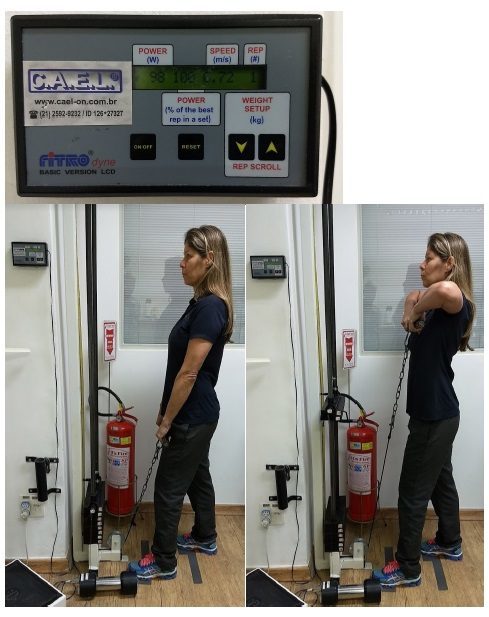"Rising from a chair in old age and kicking a ball depend more on muscle power than muscle strength, yet most weight bearing exercise focuses on the latter," said study author Professor Claudio Gil Araújo, director of research and education, Exercise Medicine Clinic -- CLINIMEX, Rio de Janeiro, Brazil. "Our study shows for the first time that people with more muscle power tend to live longer."
Power depends on the ability to generate force and velocity, and to coordinate movement.2 In other words, it is the measure of the work performed per unit time (force times distance); more power is produced when the same amount of work is completed in a shorter period or when more work is performed during the same period.3 Climbing stairs requires power -- the faster you climb, the more power you need. Holding or pushing a heavy object (for example a car with a dead battery) needs strength.
Professor Araújo said: "Power training is carried out by finding the best combination of speed and weight being lifted or moved. For strength training at the gym most people just think about the amount of weight being lifted and the number of repetitions without paying attention to the speed of execution. But for optimal power training results, you should go beyond typical strength training and add speed to your weight lifts."
Muscle power gradually decreases after 40 years of age. "We now show that power is strongly related to all-cause mortality. But the good news is that you only need to be above the median for your sex to have the best survival, with no further benefit in becoming even more powerful," said Professor Araújo.

During a median 6.5-year follow-up, 247 men (10%) and 75 women (6%) died. Median power values were 2.5 watts/kg for men and 1.4 watts/kg for women. Participants with a maximal muscle power above the median for their sex (i.e. in quartiles three and four) had the best survival. Those in quartiles two and one had, respectively, a 4-5 and 10-13 times higher risk of dying as compared to those above the median in maximal muscle power.
Professor Araújo noted that this is the first time the prognostic value of muscle power has been assessed. Previous research has focused on muscle strength, primarily using the handgrip exercise. The upright row exercise was chosen for the study because it is a common action in daily life for picking up groceries, grandchildren, and so on. The researchers are currently examining the link between muscle power and specific causes of death including cardiovascular disease and cancer. He added: "Doctors should consider measuring muscle power in their patients and advise more power training."
How to train to increase your muscle power:
- Choose multiple exercises for the upper and lower body
- Choose a weight with the load to achieve the maximal power (not so easy to lift and not so heavy that you can barely lift it)
- Do one to three sets of six to eight repetitions moving the weight as fast as possible while you contract your muscles (slow or natural speed in returning to initial position)
- Rest for 20 seconds between each set to sufficiently replenish the energy stores in your muscles to start the new set
- Repeat the above for the other exercises (biceps curl, etc.).
- Start with six repetitions in each set and when the exercise becomes easy, try to increase to eight
- If it becomes easy again, increase the weight and go back to six repetitions
- If you unable to complete the repetitions with the proper technique, avoid "cheating" and go back to less repetitions or less weight. This is important to prevent injuries.
1The abstract 'Muscle power in upright row movement: predictor of all-cause mortality in individuals between 41 and 85 years of age - Preliminary results' will be presented during Poster Session 2: Risk Factors and Prevention - Epidemiology on Friday 12 April at 08:00 to 18:00 WEST in the Poster Area.
2Metter EJ, Conwit R, Tobin J, et al. Age-associated loss of power and strength in the upper extremities in women and men. J Gerontol A Biol Sci Med Sci. 1997;52:B267-276.
3American College of Sports Medicine. American College of Sports Medicine position stand. Progression models in resistance training for healthy adults. Med Sci Sports Exerc. 2009;41:687-708.
Story Source:
Materials provided by European Society of Cardiology. Note: Content may be edited for style and length.




R.C.